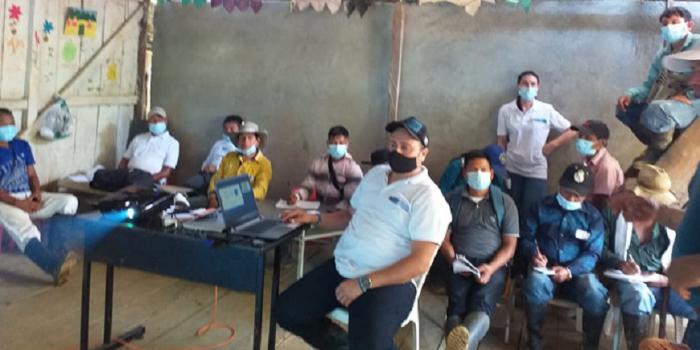
Collective reparation: embera shelter Gitó Dokabú works on characterizing the damage
The Victims Unit carries out various processes of collective reparation in the Eje Cafetero, with special emphasis on indigenous communities. This time he advanced with this community located in the jurisdiction of Pueblo Rico, Risaralda.


Officials from the Victims Unit of the ethnic and psychosocial collective reparation components came to the indigenous community of Gitó Dokabú, in Pueblo Rico, Risaralda, to advance the collective reparation route, developing the process of characterizing the damage with the participation of the own government and other members of this embera reservation.
This day (the first to be held in the community after the start of the pandemic), aimed to recognize the damage caused in the context of armed conflict and the mechanisms of resistance and coping adopted by the group, in addition to reconstructing a chronological sequence of facts and events that marked life in the region and the collective damages that are still in force in the reservation.
“Indigenous communities are subjects of special protection and attention from the Victims Unit. We are pleased to return in person to the territory, taking into account all the biosecurity protocols to take care of the inhabitants of the reservation; Collective reparation is a very important step in order to dignify the territories and improve the quality of life of our indigenous people in their ancestral lands”, Laura Moreno, territorial director of the Unit in the Coffee Region, commented on the subject.
The two-day working day began with an act of harmonization by the indigenous authorities, to then develop the time line exercise in which, with the active participation of the community, a chronological description of the history of the community was made and its collective project of life, rescuing aspects as important as the Embera language itself and the conservation of its customs, beliefs and values.
A second moment, that of the construction of the community map, characterizes the attributes of the territory, the collective practices in which the subject develops with their respective ethnic belonging, taking into account the available resources, location, limits, ancestral places and structure. organizational.
“The benefit that we have seen from the Victims Unit has been to improve living conditions and strengthen the issue of spirituality, the jaibanás, midwives, traditional and ancestral doctors, self-government, so that all our lives are not lost customs, it is a very beautiful process from which we are learning, we are doing very well with everything and we are recovering our culture, strengthening the sacred sites and protecting the territory”, said Albeiro Guatiquí, leader of Embera Katío community of Gitó Dokabú.
The day culminated with the exercise of vignettes through which it is possible to identify the pre-existence and the damage that the armed conflict has caused in the territory, the ways in which the community faced it and of course all the effects that it brought to the shelter.
(End/EHB/CMC/LMY)






